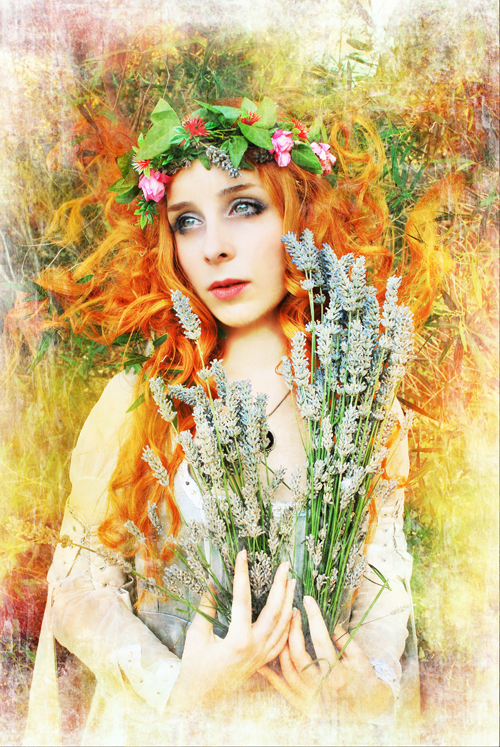
When the first photographs appeared in the mid 19th Century Photography was not yet considered an Art. But soon the photographers started to try to imitate paintings, then, the style named Pictorialism was born. Julia Margaret Cameron and Oscar Gustav Rejlander were the pioneers. The idea of these masters was to conceive photos as paintings, and they positioned close to the Pre-Raphaelist aesthetics.
Nowadays, more than 150 years later, we can find some examples of Pre-Raphaelitsm in modern photography. At this moment, right in the Digital Era, photos are taken with digital cameras and processed by computer with tools as Photoshop, a process quite cheap and to modify colors, textures and shapes. So, there are millions of new digital photographers who take uncountable photographs and proudly show them.
In this context we find many interesting artists. In this case I want to present the Spanish photographer Mara Hernández. She captures at the same time the two ideas I have talked about: the use of new media as digital camera with software utilities, with the idea of creating photos as paintings, just like the Pictorialists did, referring to the Pre-Raphaelite Art. This is not casual: Mara aesthetic taste is close to the Gothic scene and their pictures own this 19th century smell. This Pre-Raphaelite descent is even more emphasized in the photo I show today: “Ophelia (madness)“.
Ophelia is portrayed in the moment she has become mad after her parent’s death. She is a pure young woman, redheaded, who loves nature. She is crowned with flowers and takes a bunch in her hands, close to her breast. Her look is lost in the infinite: no more rational ideas will fill her mind, she cannot understand and the situation is too much for her. She drives herself to death too…
Ophelia’s picture colors have been saturated to emphasize this moment of madness: orange, yellow and green are quite intense, it´s just like she was in a lysergic trip. The two blue eyes are like pearls that bright in the focus of the pic centering our look in her beautiful face. Just an incredible tragic image.
This is only one take of a complete series about Ophelia which will appear in the book “Tragic Beauty”, where are more beautiful famous tragic death females such as Julieta, Cleopatra, Isadora Duncan or Ana Bolena. This book will be published by Asociación Cultural Mentenebre next winter. I must say that I´m proud to contribute to this book with poems devoted to each beautiful woman. Please, don´t hesitate to contact me if you are interested in this book.














